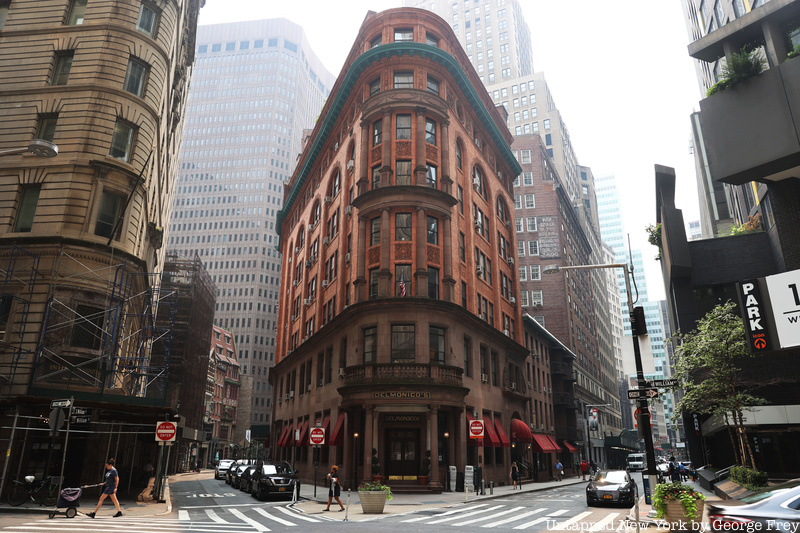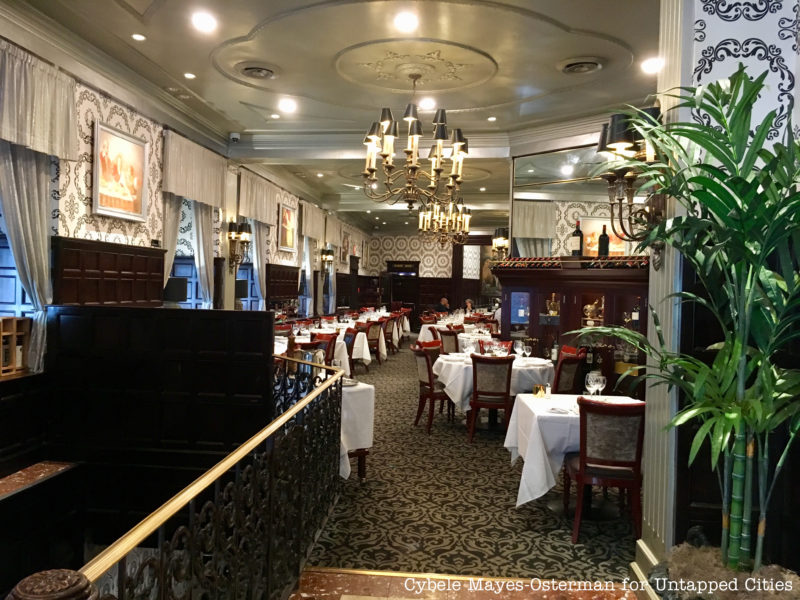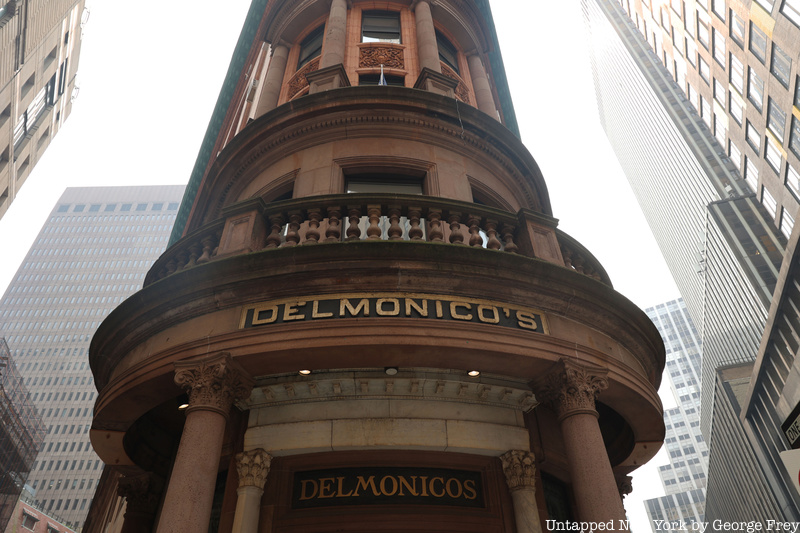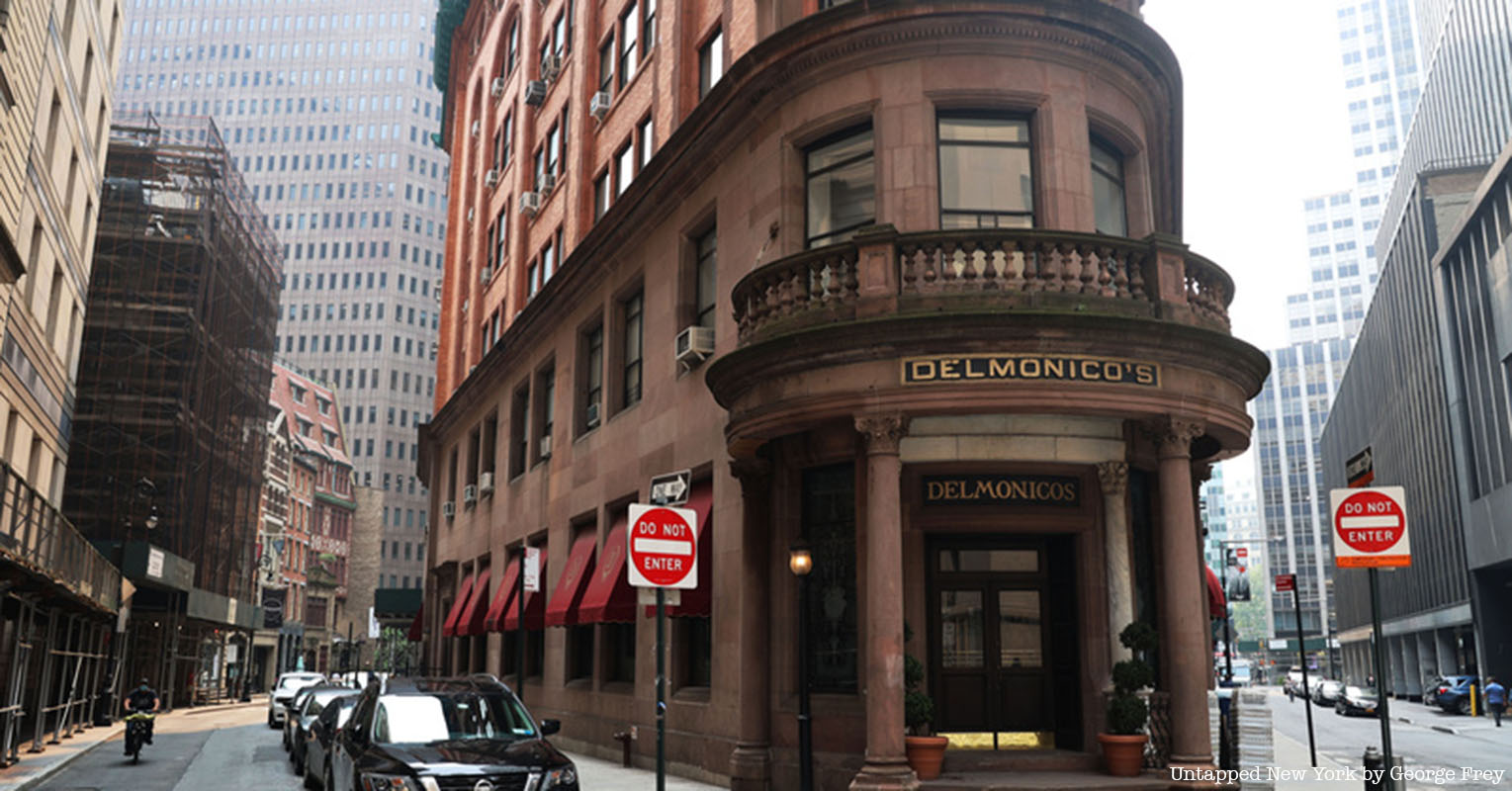Delmonico’s Steak House in the Financial District is one of the oldest restaurants in New York City. Founded in 1837, the eatery was the first fine dining restaurant in the country. As one of the fanciest restaurants in New York City, Delmonico’s offers a secret “Billionaire’s Menu” that includes a $150 flatbread topped with Wagyu beef, lobster, and black truffle shavings. Other than the titular Delmonico Steak, Delmonico’s has created many other culinary specialties. One of which, Baked Alaska, has remained on the menu for more than a century.

Chef de Cuisine Charles Ranhofer joined the Delmonico’s team in 1862. Delmonico’s Steak House, which began as a store selling coffee, chocolate, candy, wine, liquor and Havana cigars, was expanding rapidly past the Delmonico brothers who founded the institution. The addition of Ranhofer — an experienced Parisian chef — brought about the invention of classic dishes including Eggs Benedict and Lobster Newburg. His book, The Epicurean: The Classic 1893 Cookbook Charles Ranhofer, includes 92 ways to prepare eggs.
Ranhofer was known for creating dishes named after frequent Delmonico’s diners. He named Sarah potatoes after French actress Sarah Bernhardt and Salad à la Dumas after French author Alexander Dumas. However, some of his other dishes commented on current events. Inspired by the 1867 purchase of the Alaska Territory, he created Baked Alaska.

When Ranhofer first invented this concoction, he called it “Alaska, Florida.” Today, the dessert has many variations, but the original contained banana ice cream in the center, walnut spice cake at the base, and a toasted meringue shell. The name “Alaska, Florida” comments on the contrast between the cold ice cream and warm meringue. Although unconfirmed, many attribute the name “Baked Alaska” to chef de cuisine Antoine Alciatore of Antoine’s Restaurant in New Orleans.
The air bubbles preserved within whipped egg whites allow Baked Alaska’s meringue to insulate the ice cream from the heat that toasts the shell. Ranhofer most likely borrowed these gastronomic techniques from a dish called Omelette Norwegge that consists of layers of ice cream and cake covered in meringue. When the chef broils the dish as a finishing touch, the meringue preserves the layers of ice cream.
When Delmonico’s sold the dish originally, the price was equivalent to around $40 in today’s currency. This is way more than the United States payed for an acre in Alaska; when they purchased the territory for $7.2 million, each acre cost about two cents. The dessert provided a bright side to the purchase of what Americans called “Andrew Johnson’s Polar Bear Garden,” since they believed the land was barren and unnecessary.

Delmonico’s will be closed until Fall 2021. COVID-19 forced the restaurant to close temporarily. However, a legal battle between the previous four owners of the restaurant postponed the restaurant’s reopening. Following a case that reached the New York Supreme Court, two of the former owners — the Grgurev brothers — have each received a a 50-percent ownership stake in the restaurant. The Grgurev family has provided little information about the changes they have made over the past year. However, Natalia Grgurev, daughter of co-owner Ferdo Grgurev, told Untapped New York that the Baked Alaska will remain on the menu.
However, a number of other New York restaurants have added their own twists to this historic recipe. Giogrio’s of Gramercy in the Flatiron District sells their Baked Alaska with strawberry and gelato. When Sveta’s, a Russian restaurant in Greenwich Village, serves their variation of Baked Alaska, they light it on fire at the table. Philippe Chow, a high-end Chinese restaurant in Lennox Hill and Chelsea, lights their Cotton Candy Baked Alaska on fire as well. This variation contains a strawberry-vanilla mousse, devil’s food cake, and strawberries.
Next, check out 12 surprising foods invented in New York City!






